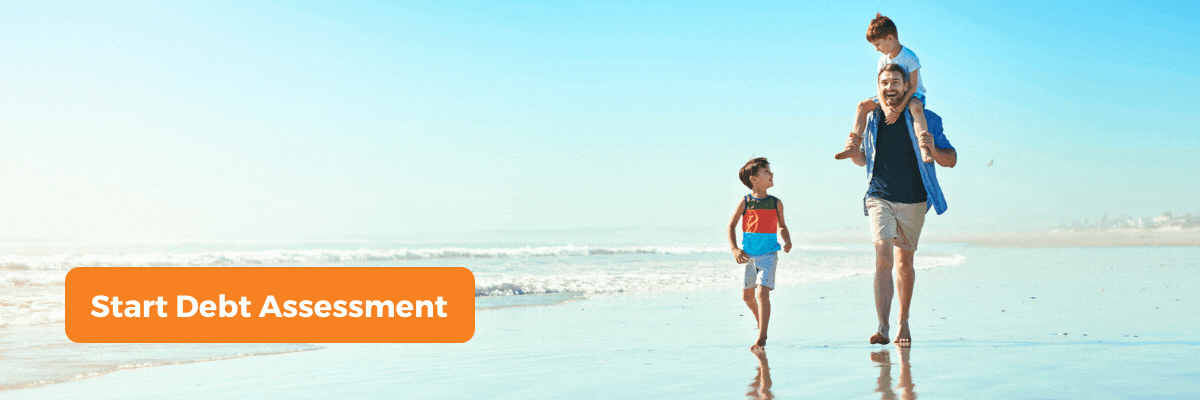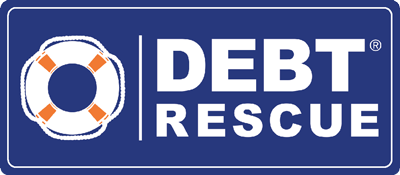Dealing with debt is a common problem for many Australians. Whether it’s a home loan, credit card, personal loan, car loan or a combination of them, debt can cause major financial stress and put you in an extremely overwhelming position. No two debts are the same. Because of this, there’s no specific way for you to reduce your debts. There is an ongoing debate as to which debt reduction strategy is best, but it all depends on your individual circumstances and preferences. If your debts are piling up and you’re unsure of the best way to get rid of them, there are three debt reduction strategies which can help you become debt-free.
Snowball Method
Have you ever made a snowball before? I know it’s difficult to imagine if you live in Australia, but the snowball method is based on packing snow into a tight ball and rolling it down a hill. Basically, as the snowball gains momentum and speed, it grows bigger and better. It’s a great technique for building snowballs, but it’s an even better strategy to reduce your debts.
How Does the Snowball Method Work?
The snowball method is a debt reduction strategy where you pay off debt in order of smallest to largest. Here’s how it works.
- List all of your debts from smallest to largest.
- Make minimum repayments on all of your debts except for the smallest.
- Put as much as you can afford on your smallest debt, until it is paid off.
- Repeat until all of your debts have been paid.
Rather than drowning in debt-stress and never knowing when your debts will be paid, this debt reduction strategy allows you to focus on your finances one step at a time. as your debts are paid off one by one, your confidence in managing them will grow. When you ditch the smallest debt first, you see positive progress. By the time you’re paying your largest debts off, you’ll have a lot of money freed up and be able to put hundreds of dollars a month extra towards your debts, instead of just paying the minimum repayments and not moving forward towards being debt-free.
If the debt snowball strategy isn’t for you, the avalanche method might be.
Avalanche Method
This debt reduction strategy continues with the snow theme. The avalanche method works by paying off your high-interest debt first, while just making the minimum repayments on the rest. The idea is so you target high-interest debt which is likely causing you the most money in interest payments. If you have two debts with the same interest rate, make sure you pay off the highest debt amount first.
How Does the Avalanche Method Work?
- List all of your debts in order of lowest to highest interest rates.
- Make minimum repayments on all of your debts except the one with the highest interest rate.
- Put as much as you can afford onto this debt, until it’s paid off.
- Repeat until all of your debts have been paid.
The avalanche method is a more cost-effective way to pay down your debts compared to other debt reduction strategies. This allows you to spend as little as possible to get your finances back on track. It might not, however, offer as much motivation as the snowball method, but the math can work in your favour in the long-term. The final debt reduction strategy is the tsunami method.
Tsunami Method
The tsunami method is a debt reduction strategy where you pay off your debts in order of their emotional impact. This method is flexible to your individual circumstances. For most of us, the process of reducing your debt is an emotional one. You can either remove emotions completely and focus on the snowball method or the avalanche method, or recognise them, identify them and use them to your advantage in the tsunami method.
How Does the Tsunami Method Work?
- List your debts from smallest to largest including interest rates
- Focus on the emotional connection you have with each debt.
- Reorder your list based on potential emotional impact – how good would it feel to eliminate them combined with how easily you can actually get that result.
- Pay minimum repayments on all other debts apart from the one with the most emotional impact.
- Repeat until all of your debts have been paid.
If your number one priority isn’t about paying the least amount of interest or eliminating the debts you have quickly, then paying off your debts based on their emotional impact can help relieve the stress associated with being in debt. If you’ve tried these debt reduction strategies but can’t seem to make them work for you, there are other options you can take to eliminate your debt.
Options When Your Debts Get Out of Control
Credit Card Balance Transfer
A credit card balance transfer can be a good way for you to reduce your debt and interest. It means you transfer your current credit card debts to a new credit card with a lower interest rate, which gives you the ability to afford to pay it off. Some banks offer balance transfer credit cards with a 0% interest rate for a certain period of time.
Debt Consolidation
Debt consolidation allows you to transfer all of your current debts (such as your credit cards, personal loans and store cards) into one, new affordable loan. This will decrease the amount of debt you owe in total and make it more affordable, so you can avoid drowning in debt and focus on living your life.
Informal Agreement
An Informal Agreement (IA) is a private agreement between you and your creditors to change the terms of your existing debt contracts. It’s a way to get out of debt without the consequences of a Formal Part 9 Debt Agreement or Bankruptcy. An IA will pause your current interest and fees and reduce your debts from 20-80%. It can be tailored to your individual financial situation and last anywhere up to seven years.
Formal Part 9 Debt Agreement
A Formal Part 9 Debt Agreement (DA) is a legislated, legal and binding agreement between you and your creditors. Similar to an IA, it pauses your interest and fees and reduces your debts. A DA is legislated under the Bankruptcy Act and therefore your name will appear on your credit file and the National Personal Insolvency Index (NPII) for five years. This can affect your limitations on borrowing credit.
Bankruptcy
Bankruptcy should be seen as a last resort once you have exhausted all of your other options. It gives you a clean slate and provides a fresh start for your finances. Declaring Bankruptcy does, however, come with consequences. Your name will be listed on your credit file for five years and appear on the NPII for life.
If you’re experiencing stress over debts but are unsure of which debt reduction strategy might work for you, contact Debt Rescue today for a free consultation. We have helped thousands of Australians get out of debt and we can help you too. Get in touch with us on 1800 003 328.
-137x60px.png)




